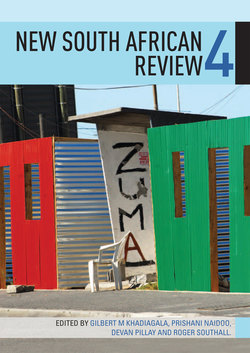Читать книгу New South African Review 4 - Devan Pillay - Страница 18
На сайте Литреса книга снята с продажи.
THE EMPEROR IS NAKED: UNPACKING THE MYTH OF ‘PROGRESSIVE’ LABOUR LAW IN SOUTH AFRICA
ОглавлениеThe first section of this chapter has painted a bleak picture of the South African labour market, pointing to the terrible difficulties many South Africans face in their daily lives. The combined high unemployment, low pay and widespread casualisation, however, appear to be a paradox, given the often criticised ‘rigidity’ (understand: protectiveness for workers) of the post-1994 labour law architecture. But how can the South African labour market be rigid, preventing employment creation, and at the same time unable to protect workers? The evidence supporting the claim that the labour market is ‘rigid’ is actually very thin, as shown by Bhorat and Cheadle’s aforementioned comparative survey of hiring and firing regimes (2007). It is therefore inaccurate to argue that rigidity or ‘high wages’ are responsible for unemployment (Strauss 2013). Recent research making such claims, for instance by Klein (2012), amounts to little more than an unsophisticated rehash of the ‘reactionary rhetoric’ dismissed by Sender (1994). Building on Forslund’s critique, we will therefore not engage such unconvincing arguments but, rather, attempt to account for the failure of the post-apartheid labour law framework to protect workers.
The failure is noteworthy when one considers that the new framework was characterised by progressive intentions and informed by a participatory, Northern European model (Donnelly and Dunn 2006). The new government, supported by a strong labour movement, carried out what was presented as a radical restructuring of the workplace aimed at ensuring racial equity, improving working conditions and democratising firm level decision-making. It built on the reforms which had followed industrial (and political) action by the black trade union movement since the early 1970s. It could be said with hindsight that the Labour Relations Act (LRA) of 1995 walked in the footsteps of the 1981 LRA in the sense that it established institutions in which unions could participate, thus asserting the legitimacy of majority black unions while continuing ‘the ongoing effort to divert union power away from the shop floor’ (Lichtenstein 2013). The crucial decision which was made in the new labour law regime was to leave most of the regulation of labour and pay (including minimum wage) conditions to sectorial bargaining councils, and to leave the establishment of the latter to unions and employers. In sectors where unions were too weak to bargain, sectoral determinations would be adopted by the minister of labour, on the recommendation of a five-member employment conditions commission (ECC), in order to regulate conditions of pay and work.6
This architecture goes a long way towards explaining why so many workers are poor and unprotected in South Africa. It would, however, be naive to think that industrial relations frameworks are the sole, or even the main, reason for labour market outcomes. The restructuring of the labour market has reflected the restructuring of the South African economy. In this section we explore how the new industrial relations system has entrenched the power of capital, first through the inability of collective bargaining (and unions by extension) to protect many workers and then through the very limited effect of direct state intervention in the labour market. Thirdly, the weakening of trade unions is discussed.
